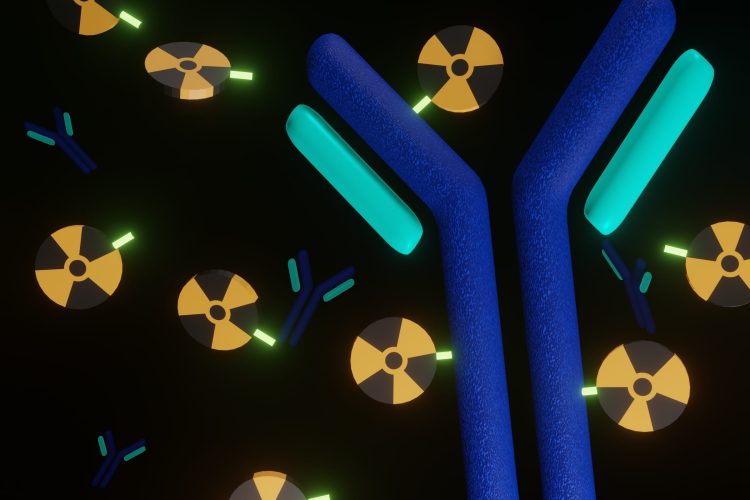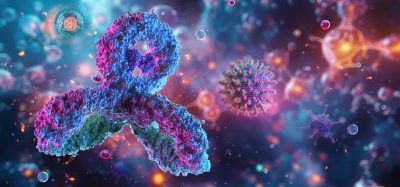Pioneering the advancement of pre-targeted radioimmunotherapies
Posted: 16 April 2024 | Ellen Capon (Drug Target Review), Francesco Sergi-Lindell (PreTT) | No comments yet
Although pre-targeting is still in its infancy, it has immense potential to increase state-of-the-art radioligand therapies. In this Q&A, PreTT reveals how their pre-targeted RLTs surpass traditional methods, transforming cancer treatment.

Can you explain how Radioligand Therapy (RLT) is applicable in the treatment of both chemotherapy-resistant tumours and in naïve patients who have not undergone prior cancer treatment?
Radioligand Therapy (RLT) is a promising approach in the treatment of various cancers, including those that are resistant to chemotherapy as well as in patients who have not undergone prior cancer treatment. RLT utilises radiopharmaceuticals, which are compounds consisting of a targeting molecule (ligand) and a radioactive isotope (radionuclide). These radiopharmaceuticals are designed to specifically target cancer cells, delivering radiation directly to the tumour while sparing surrounding healthy tissue.
In chemotherapy-resistant tumours, traditional drugs may have limited efficacy due to various drug resistance mechanisms or the inability to penetrate the tumour effectively. RLT offers an alternative therapeutic strategy by targeting specific molecular pathways or receptors that may be overexpressed on cancer cells, regardless of their resistance to traditional chemotherapy. By delivering radiation directly to the tumour cells, RLT can induce DNA damage, leading to cell death and tumour regression.
For naïve patients who have not undergone prior cancer treatment, RLT presents a promising option as an initial treatment modality. Unlike chemotherapy, which often leads to systemic toxicity and adverse effects on healthy tissues, RLT can be tailored to selectively target cancer cells while minimising damage to surrounding normal tissues. This targeted approach not only enhances the efficacy of treatment but also reduces the risk of adverse effects commonly associated with traditional cancer therapies.
One example of RLT’s applicability is the use of radiolabelled peptides targeting somatostatin receptors in neuroendocrine tumours (NETs). These tumours often exhibit resistance to conventional chemotherapy and can therefore be challenging to treat. RLT with radiolabelled somatostatin analogues have demonstrated promising results in both chemotherapy-resistant tumours and treatment-naïve patients, offering a targeted and effective therapeutic option.
What are the main limitations of using mAbs in RLT?
Monoclonal antibodies (mAbs) are powerful tools in cancer therapy, particularly in the context of Radioligand Therapy (RLT), where they can serve as carriers for radionuclides to specifically target cancer cells. However, their use in RLT also comes with certain limitations. For example, their long circulation and excretion time can limit their use for RLT. This long circulation time results in radiation exposure to healthy tissues, leading to off-target effects and limiting the dose that can be safely administered.
How does the use of peptides in radioligand therapy (RLT) compare to monoclonal antibodies (mAbs) in terms of ease of development and selectivity?
The use of peptides in Radioligand Therapy (RLT) offers some advantages over monoclonal antibodies in terms of ease of development. Peptides are relatively small molecules compared to mAbs, making them easier and less costly to produce and modulate. In contrast, development of mAbs is typically resource intensive. Nevertheless, mAbs are often considered superior to peptides or small molecules in RLT if their long accumulation and excretion profile could be accelerated.
Key advantages of mAbs over peptides and small molecules are:
- High Specificity: mAbs can be engineered to bind specifically to a particular target antigen with high affinity.
- Tumour retention: mAbs can result in prolonged retention within the tumour microenvironment, facilitating deeper penetration and improved tumour targeting compared to peptides or small molecules.
How does the pre-targeting platform separate mAb accumulation and excretion from the actual radiotherapy?
Pre-targeting is a new technology that solves the challenge rising from mAbs being used for RLT (radiation burden to healthy tissue) by separating the mAb tumour accumulation and excretion from the actual targeted radionuclide therapy. Pre-targeting is based on a two-step approach; firstly, a non-radioactive tagged mAb is administered into a patient. This tagged mAb specifically binds to the tumour before a radioactive probe is given which only clicks to the mAb tag in a second step. The unclicked probe is rapidly removed from the body via the kidneys. As this radioactive probe can be given at a set timepoint when the mAb that has not bound to the tumour has been excreted, ultra-high tumour-to-background contrast can be achieved via pre-targeting. This allows to selectively deliver high and toxic radiation doses to the tumour while minimising radiation exposure to healthy tissues. Consequently, better therapeutic efficacies can be reached with pre-targeting compared to traditional RLTs based on mAbs.
What are your future hopes for the pre-targeting platform?
Pre-targeting has shown to work in a preclinical set-up and is currently being translated into the clinic. We hope that results in the clinic will be in line with the superior behaviour observed in the preclinic. PreTT hopes to accelerate clinical translation and improve the approach further with respect to therapeutic efficacy. We believe that our platform can play a crucial role in progressing this field as only our pre-targeting platform can combine the most efficient radionuclides for therapy with current pre-targeting approaches. Pre-targeting is still in its infancy, but its potential to increase state-of-the-art RLTs is immense. At PreTT, we hope to unleash this potential.
About the author

Francesco Sergi-Lindell, CEO, PreTT
Francesco Sergi-Lindell, the CEO of PreTT, is a distinguished alumnus of Turin University, holding degrees in Corporate Law and Business Management. His journey into the field of Nuclear Medicine began with his tenure as an Area Sales Manager for a global leader in the industry, which ignited his passion for this medical application. Rising through the ranks to the position of Product Manager, he embarked on a journey around the globe, immersing himself in diverse cultures and methodologies within the RadioTheranostics domain.
Relocating to Germany, Francesco took on the role of Business Developer at a prominent pharmaceutical company specialising in RadioTheranostics. His primary mission was to pioneer new markets, a challenge he embraced with fervour. His proudest accomplishments include successfully establishing markets in Canada and Greece, culminating in multi-million-euro contracts that facilitated the utilisation of his company’s pharmaceuticals in these regions.
Outside work, Francesco cherishes moments spent with his family at their summer house in Sweden, indulging in hikes in the forest or engaging in spirited tennis matches.
Related topics
Antibodies, Cancer research, Drug Development
Related conditions
Cancer, Cancer Research
Related organisations
PreTT







